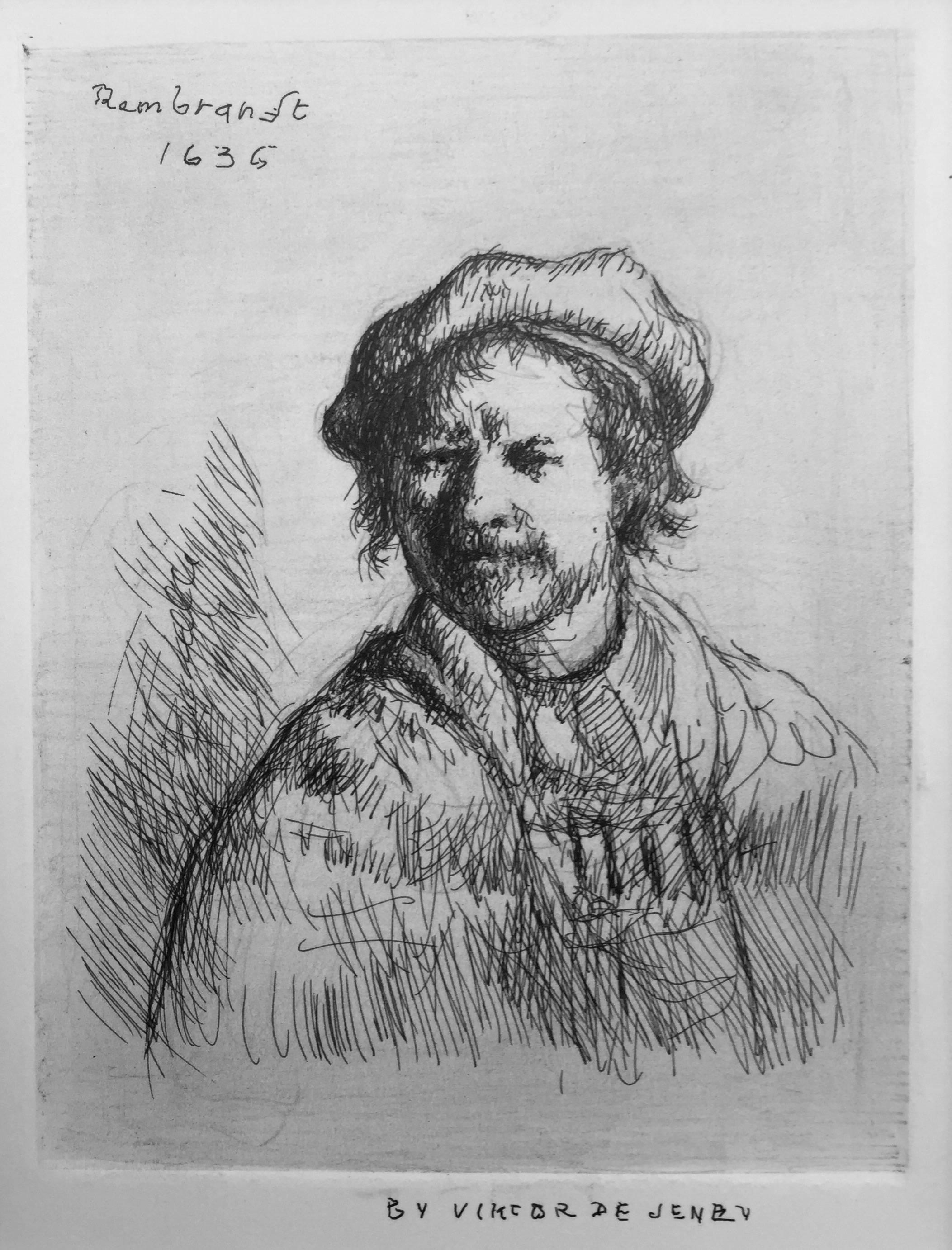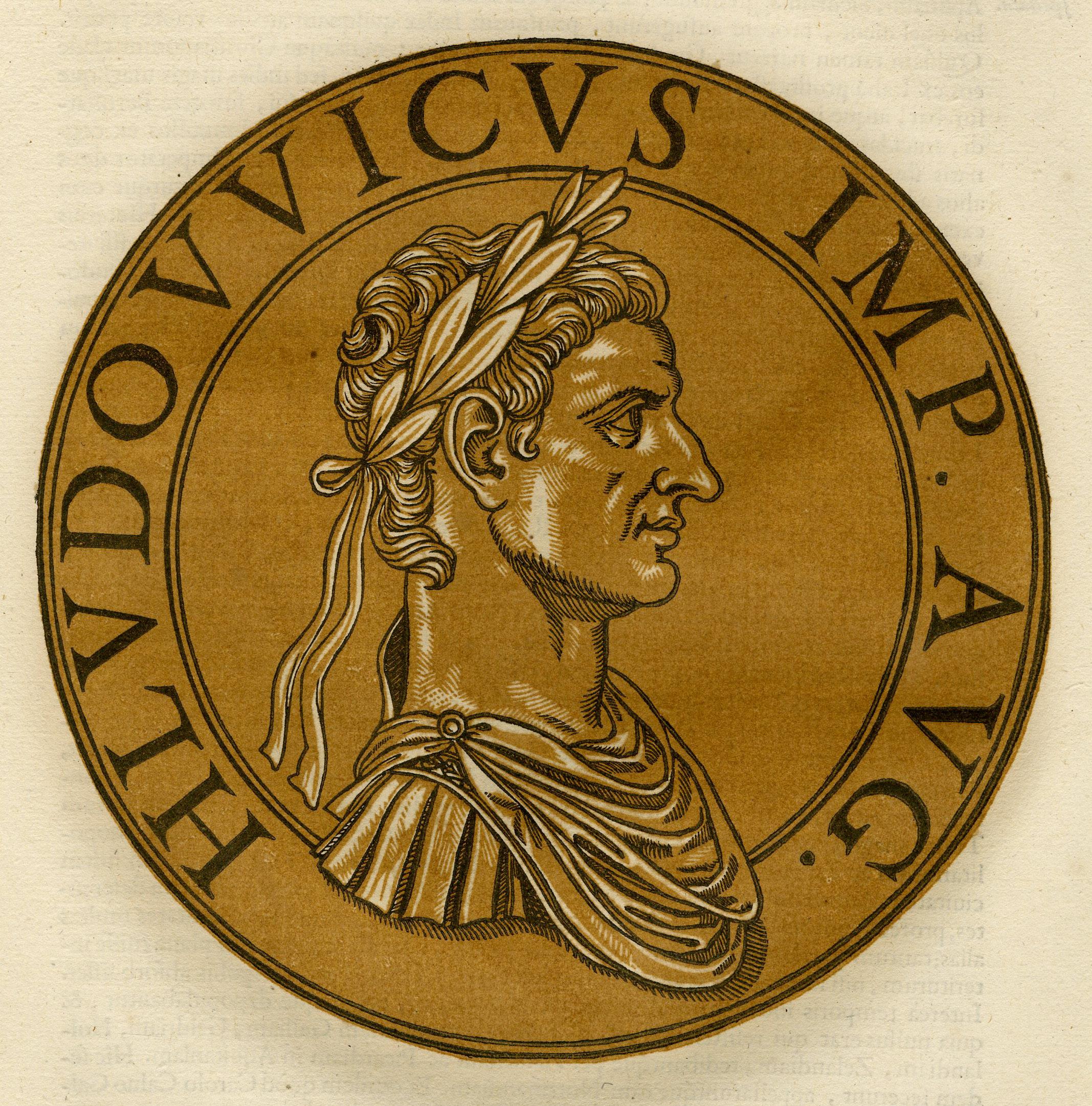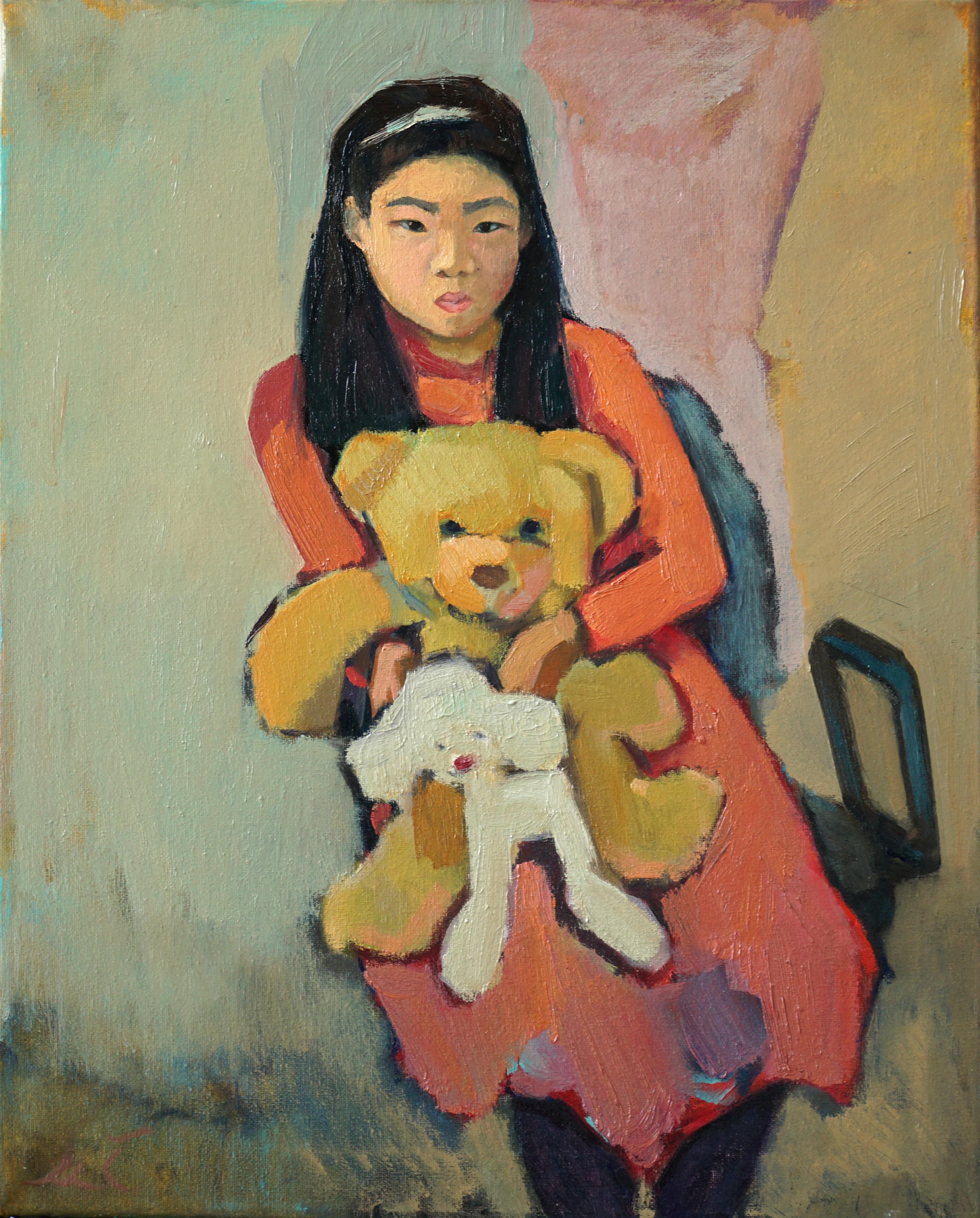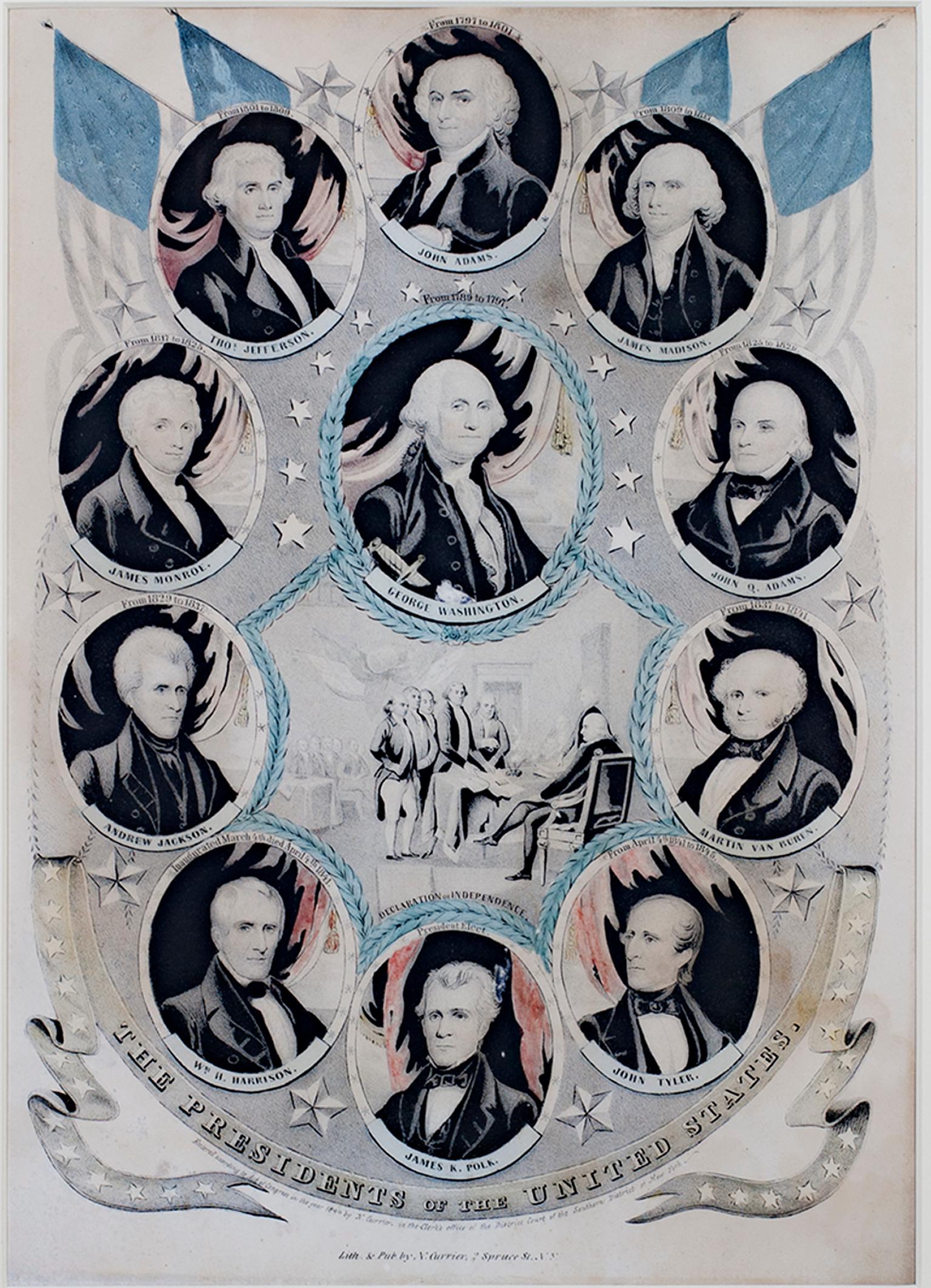Items Similar to Richard Wagner
Want more images or videos?
Request additional images or videos from the seller
1 of 5
Abot, Eugene-Michel-JosephRichard Wagnerc. 1880
c. 1880
About the Item
Richard Wagner
Etching, c. 1880
Signed in the plate (see photo)
Edition: c. 200 impressions
Condition: mint
Image/Plate size: 6 5/8 x 4 3/4 inches
Sheet size: 14 3/8 x 10 7/8 inches
Provenance: Edmubd Sagot (1857-1917), noted Parisian art dealer and collector
Richard Wagner Biography
Composer, Conductor (1813–1883)
Richard Wagner is best known for creating several complex operas, including Tristan and Isolde and Ring Cycle.
Synopsis
Born in Germany on May 22, 1813, Richard Wagner went on to become one of the world's most influential—and controversial—composers. He is famous for both his epic operas, including the four-part, 18-hour Ring Cycle, as well as for his anti-semitic writings, which, posthumously, made him a favorite of Adolf Hitler. There is evidence that Wagner's music was played at the Dachau concentration camp to "re-educate" the prisoners. Wagner had a tumultuous love life, which involved several scandalous affairs. He died of a heart attack in Venice on February 13, 1883.
Early Life
Wilhelm Richard Wagner was born on May 22, 1813, in Leipzig, Germany, and went on to become one of the world's most influential—and controversial—composers.
Richard Wagner was famous for both his complex operas, such as the four-part, 18-hour Ring Cycle
Wagner's parentage is uncertain: He is either the son of police actuary Friedrich Wagner, who died soon after Richard was born, or the son of the man he called his stepfather, the painter, actor and poet Ludwig Geyer (whom his mother married in August 1814).
As a young boy, Wagner attended school in Dresden, Germany. He did not show aptitude in music and, in fact, his teacher said he would "torture the piano in a most abominable fashion." But he was ambitious from a young age. When he was 11 years old, he wrote his first drama. By age 16, he was writing musical compositions. Young Wagner was so confident that some people considered him conceited.
The New York Times would later write in its obituary of the famous composer, "In the face of mortifying failures and discouragements, he apparently never lost confidence in himself."
Acclaimed Works
Wagner attended Leipzig University in 1831, and his first symphony was performed in 1833. He was inspired by Ludwig van Beethoven and, in particular, Beethoven's Ninth Symphony, which Wagner called "that mystic source of my highest ecstasies." The following year, in 1834, Wagner joined the Würzburg Theater as chorus master, and wrote the text and music of his first opera, Die Feen (The Fairies), which was not staged.
In 1836, Wagner married the singer and actress Minna Planer. The couple soon moved to Königsberg, where Wagner took the position of musical director at the Magdeburg Theatre. There, also in 1836, Das Liebesverbot was produced, with Wagner writing both the lyrics and the music. He called his concept "Gesamtkunstwerk" (total work of art)—a method, which he frequently used, of weaving German myths with larger themes about love and redemption.
After moving to Riga, Russia, in 1837, Wagner became the first musical director of the theater and began work on his next opera, Rienzi. Before finishing Rienzi, Wagner and Minna left Riga, fleeing creditors, in 1839. They hopped on a ship to London and then made their way to Paris, where Wagner was forced to take whatever work he could find, including writing vaudeville music for small theaters. Wagner was part of the quasi-revolutionary "Young Germany" movement, and his leftist politics were reflected in Rienzi; unable to produce Rienzi in Paris, he sent the score to the Court Theatre in Dresden, Germany, where it was accepted. In 1842, Wagner's Rienzi, a political opera set in imperial Rome, premiered in Dresden to great acclaim.
The following year, The Flying Dutchman was produced to critical acclaim. Considered a great talent by this time, Wagner was given the Prussian order of the Red Eagle and appointed director of the Dresden Opera. In 1845, Wagner completed Tannhäuser and began working on Lohengrin. In 1848, while preparing for a production of Lohengrin in Dresden, the revolutionary outbreak in Saxony occurred and Wagner, who had always been politically vocal, fled to Zurich.
Unable to enter Germany for the next 11 years due to his political stances. He also wrote Opera and Drama and began developing what would become his famous Ring Cycle, which consisted of four separate operas tied together by leitmotifs, or recurring musical themes which link plot elements.
The Ring Cycle was ahead of its time in that it combined literature, visual elements and music in a way that would anticipate the future of film. Film composers, including John Williams, were inspired by Wagner's use of leitmotifs. His work would later influence modern film scores, including those of the Harry Potter and Lord of the Rings film series.
After meeting and falling in love with Mathilde Wesendonck, the wife of Otto Wesendonck, Wagner was inspired to write Tristan and Isolde. His interest in Wesendonck, coupled with other events in his life, eventually led to his separation with his wife, Minna.
In 1862, Wagner was finally able to return to Germany. King Ludwig II, a fan of Wagner's work, invited Wagner to settle in Bavaria, near Munich, and supported him financially. Wagner didn't stay long in Bavaria, once it was discovered that he was having an affair with Cosima, the wife of the conductor Hans van Bülow, and Franz Liszt's illegitimate daughter. Bülow, who apparently condoned the affair, directed Tristan and Isolde in 1865. Wagner and Cosima had two children together before finally marrying in 1870.
The first two operas of The Ring Cycle, Das Rheingold and Die Walküre, were presented in Munich in 1869 and 1870. The Ring Cycle was finally performed in its entirely—all 18 hours—in 1876. Wagner completed his last opera, Parsifal, in January 1882, and it was performed at the Bayreuth Festival that same year.
Death and Legacy
Wagner died of a heart attack on February 13, 1883, at age 69, while vacationing in Venice, Italy for the winter. His body was shipped by gondola and train back to Bayreuth, where he was buried.
Many critics reduce his musical legacy for his anti-Semitic beliefs.
Courtesy: Biography
- Creator:Abot, Eugene-Michel-Joseph (1836 - 1894)
- Creation Year:c. 1880
- Dimensions:Height: 6.63 in (16.85 cm)Width: 4.75 in (12.07 cm)
- Medium:
- Movement & Style:
- Period:
- Condition:
- Gallery Location:Fairlawn, OH
- Reference Number:
About the Seller
5.0
Recognized Seller
These prestigious sellers are industry leaders and represent the highest echelon for item quality and design.
Platinum Seller
These expertly vetted sellers are 1stDibs' most experienced sellers and are rated highest by our customers.
Established in 1978
1stDibs seller since 2013
711 sales on 1stDibs
Typical response time: 1 hour
Associations
International Fine Print Dealers Association
- ShippingRetrieving quote...Ships From: Akron, OH
- Return PolicyA return for this item may be initiated within 10 days of delivery.
More From This SellerView All
- Louis I of France as a Roman Emperor, in profile to the rightBy Christoffel JegherLocated in Fairlawn, OHLouis I of France as a Roman Emperor, in profile to the right Chiaroscuro woodcut, 1631-1633 Unsigned (as usual) After a drawing by Hubert Goltzius (1526-1583)...Category
17th Century Academic Portrait Prints
MaterialsABS, Woodcut
- Surrealist Composition with Bird in ProfileBy Nahum TschacbasovLocated in Fairlawn, OHEngraving, aquatint and mixed intaglio Signed, dated and annotated "AP" References And Exhibitions: Tschacbasov was a Russian/Amiercan artist who was widely exhibited and collecte...Category
1940s Surrealist Portrait Prints
MaterialsEngraving, Aquatint, Intaglio
- Dames charmante et charmante a tous egardBy Marc ChagallLocated in Fairlawn, OH(A charming lady chatting with a lady perfect in every possible way) Signed in the plate. No pencil signed impressions are existent. Edition: 368 (including 50 imps on japan) includi...Category
1920s French School Figurative Prints
MaterialsEtching
- Chinois inventa, dit-on, la poudre a canon, nous en fit donBy Georges RouaultLocated in Fairlawn, OHChinois inventa, dit-on, la poudre a canon, nous en fit don (The Chinese invented gunpowder, they say, and made is a gift of it) Aquatint, roulette, drypoint, acid bite, and scorper, 1926 From: Miserere, Plate 38 Initially started by Ambrose Vollard, this portfolio was published in 1948 by Editions de l'Etoile Filante, Paris This image is the cover illustration for the 1938 MOMA catalog...Category
1920s French School Portrait Prints
MaterialsDrypoint, Aquatint
- J. Becquet, SculptorBy James Abbott McNeill WhistlerLocated in Fairlawn, OHJ. Becquet, Sculptor Etching & drypoint, 1859 Unsigned as issued From: The Thames Set Printed on this Japanese tissue Rich impression Condition: Excellent Plate/Image size: 9 7/8 x 7...Category
19th Century Impressionist Portrait Prints
MaterialsDrypoint, Etching
- L'Infante Marguerite (D'Après Velasquez)By Édouard ManetLocated in Fairlawn, OHL'Infante Marguerite (D'Après Velasquez) after a Manet painting in the collection of the Louvre, Paris (see photo) Etching, 1862-1864 Unsigned (as usual) A posthumous impression from...Category
1860s Impressionist Portrait Prints
MaterialsEtching
You May Also Like
- "Rembrandt Self Portrait, 1636"By Viktor de JeneyLocated in Southampton, NYHere is a etching executed by master painter and copyist, Viktor de Jeney. Done circa 1965 using the same techniques employed by Rembrant when he executed his now most famous self portrait etching in 1642. Framed measurements are 15.5 by 12.5 inches in original white mat and one inch wood frame. Sheet size 8.25 by 8 inches. De Jeney was born in Budapest, Hungary and emigrated to the United States in 1962 and settled in St. Louis, Missouri. He was known for his paintings of Native American Indians...Category
1960s Academic Portrait Prints
MaterialsEtching
- "Yellow Thunder" Chippewa Chief Lithograph Portrait by McKenney & HallBy McKenney & HallLocated in Hallowell, ME“O-hya-wa-mince-kee. A Chippewa Chief.” [Yellow Thunder.] From McKenney & Hall’s History of the Indian Tribes of North America. Philadelphia: Rice & Clark, 1843. Folio: image ca. 15 x 12. Lithograph. Original hand color. Very good condition. The McKenney & Hall lithographs of Native Americans The McKenney & Hall prints of Native Americans, from their History of the Indian Tribes of North America (1837-1844), document an important part of American history, illustrating the great leaders of the Indian nations which have disappeared since the mid-nineteenth century. Thomas McKenney, head of the United States Bureau of Indian Affairs for many years, was a champion of the Indian and fought throughout his tenure to preserve something of their culture, so integral a part of the history of the United States. His legacy was a gallery of portraits of the great chiefs by artists such as James Otto Lewis, Charles Bird King and George Cooke...Category
1830s Academic Portrait Prints
MaterialsLithograph
- Tender Innocence print on canvasLocated in Sempach, LUHigh quality print on canvas. Made from original oil painting "Tender Innence". Originally created by artist Maria Matveyeva in 2016 year.Category
2010s Academic Portrait Prints
MaterialsCanvas
- "The Presidents of the US, " Original Handcolored Lithograph by Nathaniel CurrierBy Nathaniel CurrierLocated in Milwaukee, WI"The Presidents of the U.S." is an original hand-colored lithograph by Nathaniel Currier. It features the first eleven presidents of the United States. 14" x 10" art 23" x 19 1/8" frame Nathaniel Currier was born March 27, 1813 to Nathaniel and Hannah Currier in Roxbury, Massachusetts. At the age of fifteen he was apprenticed to William S. and John Pendleton of Boston who had set up the first lithographic establishment in America. His apprenticeship served him well as he went on to be the largest publisher of lithographs. Mr. Maurer described Nat Currier as being very gentlemanly and liberal. As is evident to the success of the firm of Currier & Ives he was very devoted to his business. Nat Currier had many friends including Horace Greely and P.T. Barnum. He was well known for his sense of humor and Harry T. Peters tells one story about P. T. Barnum. "Currier had heard that one day his friend, the great showman, had rushed into the barber shop of the old Park Hotel, at Beekman and Nassau Streets, to get a shave. Barnum had hurried up to Tom Higginson, the barber, and said, 'Tom, I'm in a hurry.' 'Sorry for it,' said Tom, 'but it's that gentleman's turn next.' 'That gentleman' was an unshaven irshman waiting for a ten-cent shave. Barnum turned to him and said, 'My friend, if you will let me have your turn, I'll pay for what you have done.' The gentleman consented, and, as Barnum found out later, had a full job done - absolutely everything the house had. The check was for a dollar and sixty cents. When Currier heard this story he found the very Irishman and had him pose. The result was the famous cartoon, "The Man that Gave Barnum 'His Turn.'" Nathaniel was married twice; his first wife was Miss Eliza West of Boston. He had one son with Eliza, Edward West Currier. In 1847 he married Miss Laura Ormsbee of Vermont. Laura and Nathaniel are memorialized in the famous N. Currier lithograph The Road Winter...Category
1840s Academic Portrait Prints
MaterialsLithograph
- "Wa-Em-Boesh-Kaa, A Chippeway Chief, " Hand-colored Lithograph by McKenney & HallBy McKenney & HallLocated in Milwaukee, WI"Wa-Em-Boesh-Kaa, A Chippeway Chief," is an original hand-colored lithograph by McKenney & Hall. It features a portrait of a notable Native American chief, with informational text below. 13 1/2" x 18 3/4" paper 25 5/8" x 20 1/2" frame American lithograph publishers. Most well-known for "History of the Indian Tribes of North America," a collection of 125 images that included biographical sketches and anecdotes of principal chiefs. Thomas Loraine McKenney (1785-1859) served as Commissioner of Indian Affairs from 1824 to 1830. In that capacity he commissioned and collected portraits of Native Americans...Category
1830s Academic Portrait Prints
MaterialsLithograph
- "Kish-Ke-Kosh-A Fox Brave (Sauk-Fox)" Hand-colored Lithograph by McKenney & HallBy McKenney & HallLocated in Milwaukee, WI"Kish-Ke-Kosh, A Fox Brave (Sauk-Fox)" is an original hand-colored lithograph by McKenney & Hall. This piece features a Native American man. Reference: Page 200 of The North American Indian Portfolios in the Library of Congress. 13 1/4" x 9 3/4" art 27 1/4" x 22 3/8" frame American lithograph publishers. Most well-known for "History of the Indian Tribes of North America," a collection of 125 images that included biographical sketches and anecdotes of principal chiefs. Thomas Loraine McKenney (1785-1859) served as Commissioner of Indian Affairs from 1824 to 1830. In that capacity he commissioned and collected portraits of Native Americans...Category
1830s Academic Portrait Prints
MaterialsLithograph





